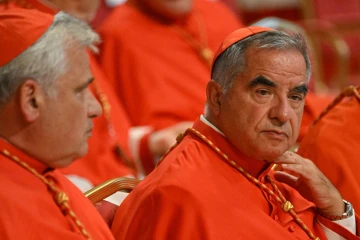Hagia Sophia: Architectural Marvel Through The Ages

Table of Contents
The Byzantine Era: Genesis of a Masterpiece
Construction and Innovative Design
Emperor Justinian I, in the 6th century, commissioned the construction of the Hagia Sophia, a project of immense ambition that lasted from 532 to 537 AD. Its architects, Anthemius of Tralles and Isidore of Miletus, employed groundbreaking architectural techniques to create a structure of unprecedented scale and beauty. The most striking feature is its massive dome, a feat of engineering that utilized innovative pendentives – triangular supports – to transition the circular dome onto a square base. Overcoming numerous challenges, they created a masterpiece:
- Dimensions: The dome boasts a diameter of approximately 31 meters (102 feet) and soars to a height of 55.6 meters (182 feet).
- Materials: High-quality materials like marble, brick, and porphyry were sourced from across the Byzantine Empire, reflecting the vast resources at Justinian's disposal.
- Innovative Techniques: The use of pendentives was revolutionary, allowing for a larger, more impressive dome than previously possible. The clever use of lightweight materials also contributed to its structural stability.
- Impact of the Dome: The size and visual impact of the dome were awe-inspiring, creating a sense of grandeur and divine presence.
Interior Splendor and Artistic Decor
The interior of the Hagia Sophia was, and to some extent remains, a breathtaking spectacle of artistry and craftsmanship. Lavish mosaics, shimmering gold, and intricate patterns adorned the walls and ceilings, creating a luminous and ethereal atmosphere. The interplay of natural light filtering through the high windows further enhanced the overall effect:
- Surviving Mosaics: While much of the original decoration was lost or altered over the centuries, some stunning mosaics have survived, providing a glimpse into the building's original splendor.
- Symbolic Meaning: The mosaics depicted biblical scenes and imperial figures, reinforcing the building's role as both a religious and political center.
- Light and Shadow: The carefully designed placement of windows and the vastness of the interior created a dramatic interplay of light and shadow, amplifying the spiritual atmosphere.
Ottoman Era Transformation: Mosque and Symbol of Empire
Conversion into a Mosque
Following the conquest of Constantinople by Mehmed II in 1453, the Hagia Sophia was converted into a mosque. This significant transformation marked a pivotal moment in the building's history and reflected the shifting power dynamics of the region:
- Conversion Date: The conversion took place shortly after the conquest, signifying the Ottoman Empire's dominance.
- Modifications: While retaining much of the original structure, several modifications were made to adapt the building to its new purpose.
- Removal of Christian Iconography: Many Christian icons were either removed, covered, or altered to align with Islamic artistic sensibilities.
Architectural Adaptations and Additions
The Ottomans added several architectural elements to integrate the Hagia Sophia into their cultural and religious landscape:
- Minarets: Four elegant minarets were added to the exterior, becoming iconic features of the Istanbul skyline. Their style and construction reflected Ottoman architectural preferences.
- Mihrab (Prayer Niche): A mihrab, indicating the direction of Mecca, was incorporated into the interior, signifying the shift in the building's religious function.
- Minbar (Pulpit): A minbar was added for the imam to deliver sermons, another essential addition for a functioning mosque.
Modern Hagia Sophia: Museum and Beyond
Secularization and Museum Status
Under the Turkish Republic, in 1935, the Hagia Sophia was secularized and converted into a museum, opening its doors to visitors from around the world:
- Museum Status: This decision reflected a commitment to preserving the building's historical and cultural significance for all.
- Restoration Works: Extensive restoration and conservation efforts were undertaken to preserve the structure and its remaining artwork.
- Accessibility: The museum status significantly improved accessibility to the public, allowing a wider audience to appreciate its architectural and artistic achievements.
Recent Developments and Ongoing Debates
In 2020, the Hagia Sophia's status was reversed, reverting to its use as a mosque after a court ruling. This decision has sparked significant debate:
- Legal and Political Aspects: The change has raised complex legal and political questions concerning the building's ownership, usage, and preservation.
- Public Reaction: The change has evoked a wide spectrum of reactions globally, highlighting the building's enduring importance as a symbol of different faiths and cultures.
- Preservation Concerns: Concerns remain regarding the balance between preserving the building's historical integrity and adapting it for religious use.
Conclusion
The Hagia Sophia's journey through Byzantine and Ottoman eras, and its ongoing relevance as a museum and now a mosque, exemplifies its enduring status as a remarkable testament to human ingenuity and cultural exchange. Its architectural innovations, particularly its groundbreaking dome, continue to inspire awe and wonder. The building's transformation reflects the complex interplay of history, religion, and politics, making it a truly unique and captivating architectural marvel. Delve deeper into the architectural wonders of the Hagia Sophia by exploring its rich history and diverse transformations. Plan your journey to witness this architectural marvel firsthand, or take a virtual tour to explore its magnificent interior and experience its enduring legacy.

Featured Posts
-
 Trump Backs Pete Rose Pardon And Hall Of Fame Induction Call
Apr 29, 2025
Trump Backs Pete Rose Pardon And Hall Of Fame Induction Call
Apr 29, 2025 -
 Open Thread February 16 2025 Community Forum
Apr 29, 2025
Open Thread February 16 2025 Community Forum
Apr 29, 2025 -
 Guilty Plea Lab Owner Faked Pandemic Test Results
Apr 29, 2025
Guilty Plea Lab Owner Faked Pandemic Test Results
Apr 29, 2025 -
 Perplexity Vs Google A Ceos Perspective On The Future Of Ai Browsers
Apr 29, 2025
Perplexity Vs Google A Ceos Perspective On The Future Of Ai Browsers
Apr 29, 2025 -
 Trumps Potential Pardon For Pete Rose A Look At The Mlb Betting Ban
Apr 29, 2025
Trumps Potential Pardon For Pete Rose A Look At The Mlb Betting Ban
Apr 29, 2025
Latest Posts
-
 Finding Nostalgia On You Tube Older Viewers Share Their Experiences
Apr 29, 2025
Finding Nostalgia On You Tube Older Viewers Share Their Experiences
Apr 29, 2025 -
 Returning To Beloved Shows How You Tube Caters To Older Viewers
Apr 29, 2025
Returning To Beloved Shows How You Tube Caters To Older Viewers
Apr 29, 2025 -
 London Real Estate Fraud British Court Upholds Vaticans Claim
Apr 29, 2025
London Real Estate Fraud British Court Upholds Vaticans Claim
Apr 29, 2025 -
 Vatican Defrauded London Real Estate Deal Ruled Fraudulent By British Court
Apr 29, 2025
Vatican Defrauded London Real Estate Deal Ruled Fraudulent By British Court
Apr 29, 2025 -
 Analyzing You Tubes Appeal To An Aging Viewership
Apr 29, 2025
Analyzing You Tubes Appeal To An Aging Viewership
Apr 29, 2025
